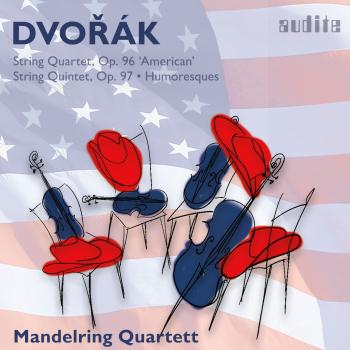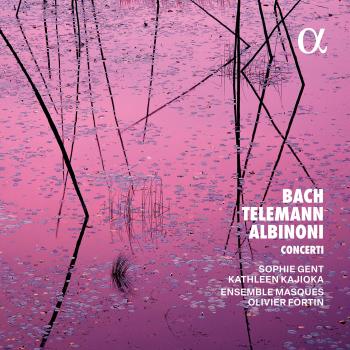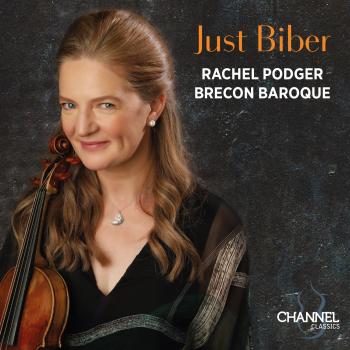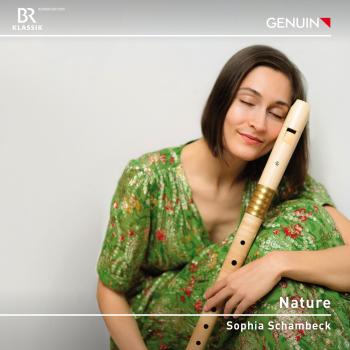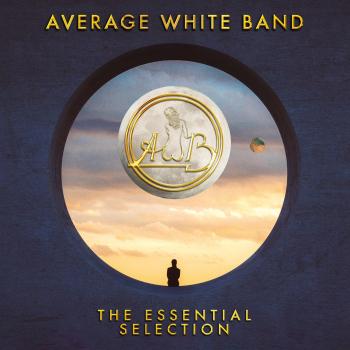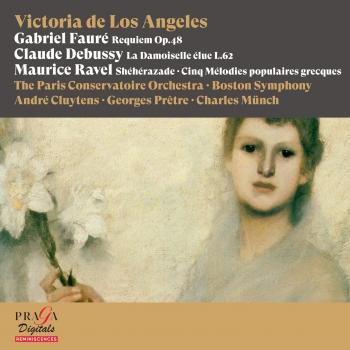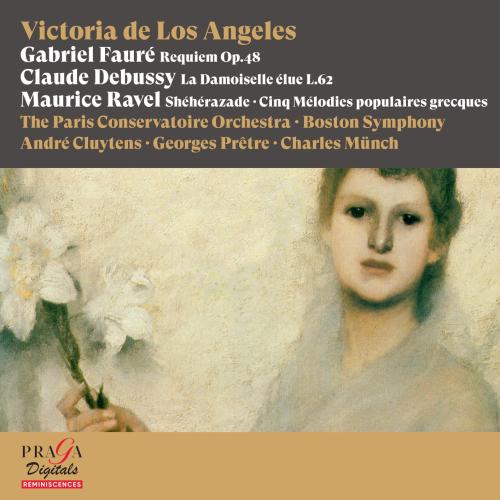
Victoria de Los Angeles: Fauré, Debussy & Ravel Victoria de Los Angeles, The Paris Conservatoire Orchestra, Bosten Symphony, André Cluytens, Georges Prêtre & Charles Münch
Album Info
Album Veröffentlichung:
2016
HRA-Veröffentlichung:
08.04.2022
Label: Praga Digitals
Genre: Classical
Subgenre: Vocal
Komponist: Gabriel Fauré (1845-1924), Claude Debussy (1862-1918), Maurice Ravel (1875-1937)
Das Album enthält Albumcover Booklet (PDF)
- Gabriel Fauré (1845 - 1924): Requiem, Op. 48:
- 1 Fauré: Requiem, Op. 48: I. Introït & Kyrie 08:01
- 2 Fauré: Requiem, Op. 48: II. Offertoire 09:07
- 3 Fauré: Requiem, Op. 48: III. Sanctus 03:13
- 4 Fauré: Requiem, Op. 48: IV. Pie Jesu 03:15
- 5 Fauré: Requiem, Op. 48: V. Agnus Dei 06:44
- 6 Fauré: Requiem, Op. 48: VI. Libera me 05:17
- 7 Fauré: Requiem, Op. 48: VII. In Paradisum 03:55
- Claude Debussy (1862 - 1918): La Damoiselle élue, L. 62:
- 8 Debussy: La Damoiselle élue, L. 62: I. La Damoiselle élue 08:39
- 9 Debussy: La Damoiselle élue, L. 62: II. Je voudrais qu'il fût déjà près de moi 10:43
- Maurice Ravel (1875 - 1937): Shéhérazade:
- 10 Ravel: Shéhérazade: I. Asie 08:22
- 11 Ravel: Shéhérazade: II. La flûte enchantée 02:31
- 12 Ravel: Shéhérazade: III. L'indifférent 03:01
- Five Greek Songs:
- 13 Ravel: Five Greek Songs: I. Le réveil de la mariée (Modéré, très doux) 01:23
- 14 Ravel: Five Greek Songs: II. Là-bas, vers l'église (Andante) 01:19
- 15 Ravel: Five Greek Songs: III. Quel galant m'est comparable (Allegro) 00:50
- 16 Ravel: Five Greek Songs: IV. Chanson des cueilleuses de lentisques (Lent) 02:21
- 17 Ravel: Five Greek Songs: V. Tout gai! (Allegro) 01:02
Info zu Victoria de Los Angeles: Fauré, Debussy & Ravel
Auf dieser Veröffentlichung wird die spanische lyrische Sopranistin Victoria de Los Angeles von dem Bariton Dietrich Fischer-Dieskau für ein rein französisches Programm mit Faures Requiem, Debussys La Demoiselle élue und Ravels Shéhérazade begleitet. Diese historischen Aufnahmen aus dem Jahr 1962 enthalten Aufführungen mit dem Boston Symphony, dem Orchestre de la Société des Concerts du Conservatoire, Charles Munch und André Cluytens.
Victoria de los Angeles verfügte über einen überaus luxuriös und fraulich timbrierten lyrischen Sopran mit Spinto bzw. jugendlich dramatischen Qualitäten (Butterfly, Suor Angelica, Tannhäuser Elisabeth, Elsa). Manche umschrieben ihren Sopran mit Engelsstimme. Sie hat in ihrer Geburtsstadt Barcelona Gesang, Klavier und Gitarre studiert. Ihr Lieblingstenor war Jussi Björling (die gemeinsamen Einspielungen von La Boheme, I Pagliacci und Madama Butterfly sind legendär), von dem sie jedoch behauptete, dass die Aufnahmen die Qualität und Schönheit seiner Stimme nur unzureichend wiedergeben. Vielleicht ist das auch bei den vorliegenden Ausschnitten der Victoria de los Angeles der Fall. Dennoch kann der Hörer gerade bei den impressionistischen Juwelen eines Debussy und Ravel das raffinierte Spiel mit den Klangfarben, die präzise Textausdeutung sowie die elegische Träne im Timbre bewundern. Mit welcher Hingabe, Einsatz der ganzen Seele und künstlerischer Unbestechlichkeit (sie lehnte etwa den „scheinheiligen“ Charakter der Tosca komplett ab und sang daher auch diese Rolle nie) diese auch menschlich so herausragende Persönlichkeit hohe Gesangskunst zelebrierte, ist ebenfalls nachzuhören. Chapeau! (Dr. Ingobert Waltenberger, onlinemerker.com)
Victoria de Los Angeles, Sopran
Dietrich Fischer-Dieskau, Bariton (Tracks 2, 6)
The Paris Conservatoire Orchestra
Henriette Puig-Roget, Orgel
André Cluytens, Orgel (Tracks 10-17)
Georges Prêtre, Orgel (Tracks 11)
Bosten Symphony
Charles Münch, Dirigent (Tracks 8, 9)
Digitally remastered
Victoria de Los Angeles
(originally Victoria de los Ángeles López García) was born into a musical family and was attending opera performances by the age of nine. She entered the Barcelona Conservatory when she was fifteen to study singing with Dolores Frau, completing the six-year course in only three and singing Mimì (La Bohème) in a student production in 1941.
Her first professional concert recital took place in 1944 and during January 1945 she made her professional operatic stage debut as the Countess (Le nozze di Figaro) at the Teatro del Liceu, Barcelona. In her second season at the Liceu, 1945–1946, she took on four of the roles in which she was to be most successful: Mimì, Massenet’s Manon, Marguerite (Faust) and Elisabeth (Tannhäuser).
At the 1947 Geneva International Singing Competition in 1947 de los Angeles won first prize and her international career quickly took off. The following year she was invited by the BBC to sing Salud in a broadcast of Falla’s La vida breve, as a result of which she signed an exclusive contract with EMI which lasted for thirty years and resulted in twenty-one complete opera recordings and twenty-five recital discs.
An extremely successful debut at the Paris Opera in 1949 as Marguerite (Faust) was followed by her debut as Eva (Die Meistersinger von Nürnberg) at Barcelona. During 1950 she first appeared at La Scala, Milan in the title role of Ariadne auf Naxos (returning as Donna Anna / Don Giovanni in 1951, with Karajan conducting, and as Agathe / Der Freischütz in 1955) and at the end of that year gave the first of several much-admired performances at the Royal Opera House, London as Manon and Mimì, as well as a single Elsa (Lohengrin). She returned to London as Butterfly (Madama Butterfly) in 1951 and 1957, as Manon in 1960 and as Mimì in 1962.
During the spring of 1951 de los Angeles made her first appearance at the Metropolitan Opera, New York as Marguerite. The audience was ecstatic and for the next ten years she returned annually to the Met: her roles included Butterfly, Mélisande (Pelléas et Mélisande), Rosina (Il barbiere di Siviglia), Violetta (La traviata), Desdemona (Otello), Micaëla (Carmen), Elsa, Elisabeth, Eva and the title role in Flotow’s Martha.
A tour of Australia and New Zealand during 1956 included forty-seven concerts in all, and was followed in 1957 by a triumph at the Vienna State Opera as Mimì. At a gala performance at the Royal Opera House, London in 1961 however, when de los Angeles sang both Santuzza (Cavalleria rusticana) and Nedda (Pagliacci), a sense of strain at the top of her voice was apparent. Nonetheless she sang Elisabeth at the Bayreuth Festival during the summers of 1961 and 1962, but from 1963 onwards severely curtailed her operatic appearances while continuing to sing in concert and recital all over the world: a notable highlight was Gerald Moore’s farewell recital with Schwarzkopf and Fischer-Dieskau, given in London during 1967.
By now de los Angeles had lost her top register and was concentrating upon the high mezzo repertoire: she had already recorded the title role in Carmen with Beecham during 1958 and 1959. Although she formally retired from the operatic stage in 1969, after an exceptionally successful portrayal of Desdemona in Dallas, she continued to make occasional appearances. Later operatic roles included Mélisande at the Teatro Zarzuela, Madrid (1980) and Reina Isabel in L’Atlántida by Falla / Halffter in Barcelona (1990–1991); she also sang at the closing ceremony of the Olympic Games in Barcelona in 1992, but decided to cease public performance completely in 1998, following the death of one of her sons.
During her prime de los Angeles was credited with having one of the most sheerly beautiful voices of her generation. On stage she dazzled audiences with little apparent effort, creating an immediate dramatic resonance. Her recorded legacy is large and of a very high standard.
Booklet für Victoria de Los Angeles: Fauré, Debussy & Ravel

